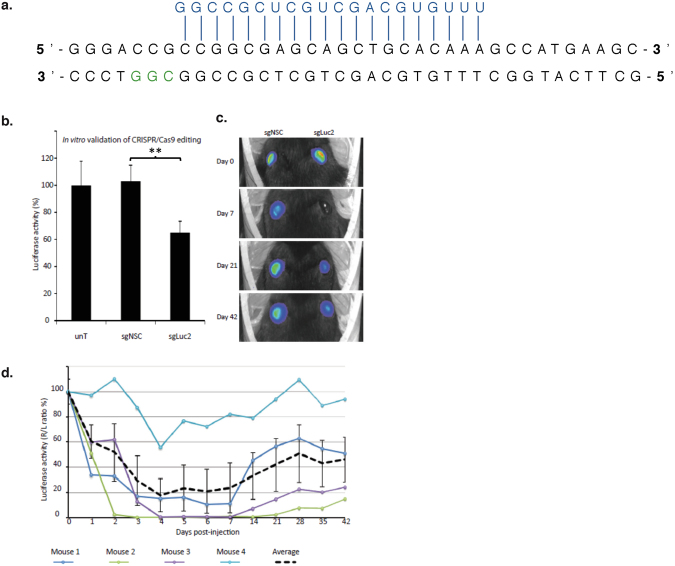Figure 2.
Sustained CRISPR/Cas9 mediated silencing of luc2 in vivo. (a) The short guide RNA (sgRNA) specific for luc2 was designed to target the 5′ region of the gene, to increase the likelihood of inducing a frame-shifting deletion that would knock out luciferase activity by generating a premature termination codon. (b) An in vitro dual-luciferase assay demonstrated successful targeting of luc2 by the sgLuc2 construct, as shown by a significant reduction in luciferase activity when normalized to untreated cells (data normalised against the untreated control = 100%). (c) Representative image of mice displaying a maximal reduction in luc2 expression after injection with the sgLuc2 construct (right eye). This image was taken from the mouse represented by the green line in panel (d), below, at 7 days post treatment. (d) After treatment, the corneal luciferase activity of each mouse was quantified using a Xenogen IVIS live animal imager every day for 7 days, then every 7 days thereafter, for a total of 6 weeks. Luciferase activity for each treatment group expressed as a percentage of control (R/L ratio %).

